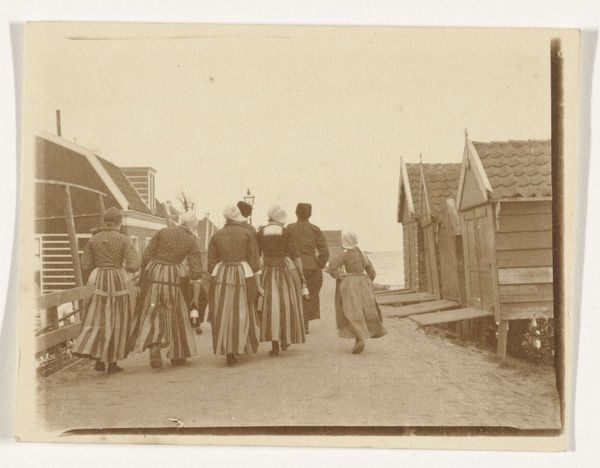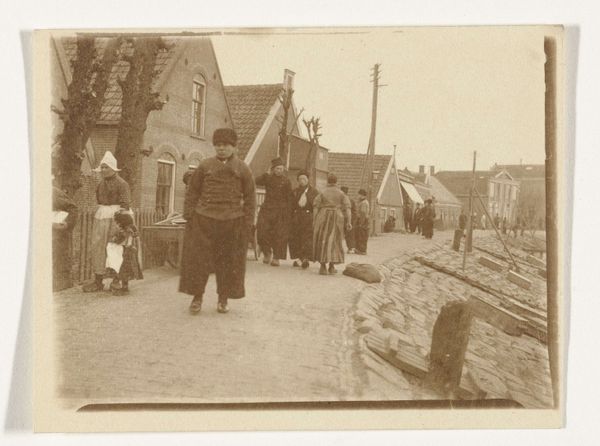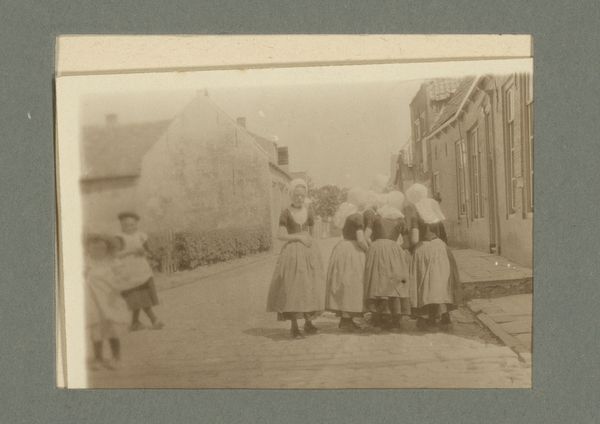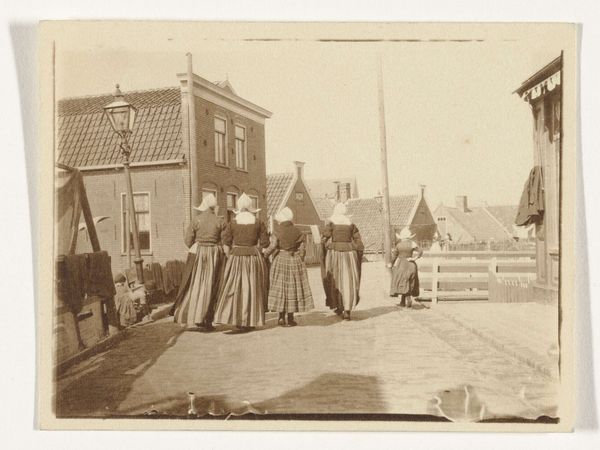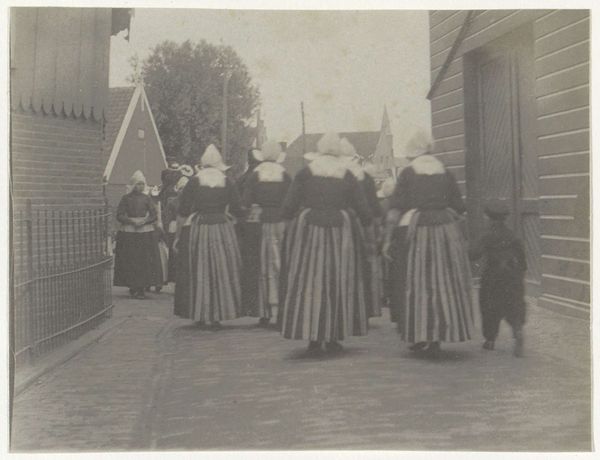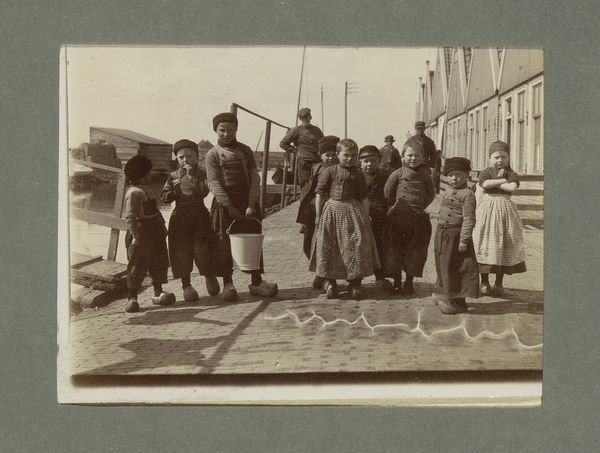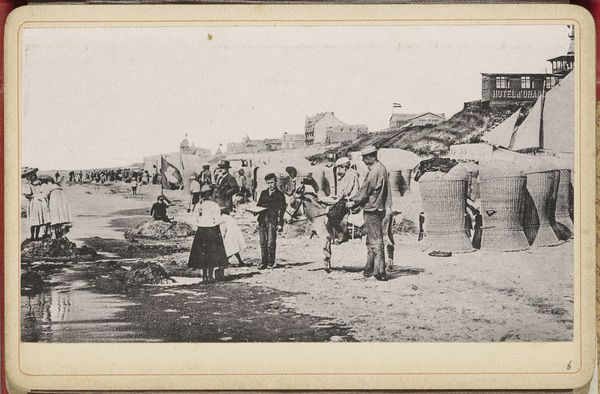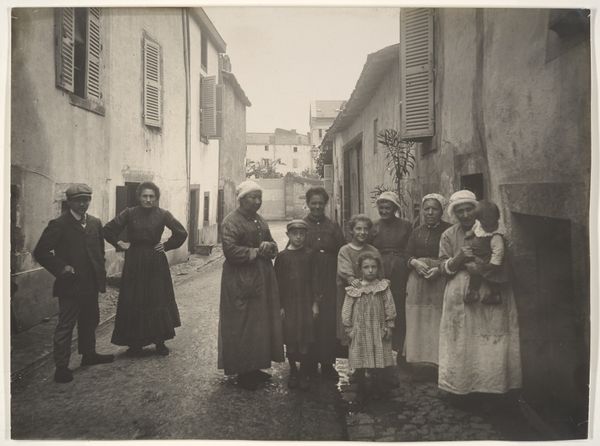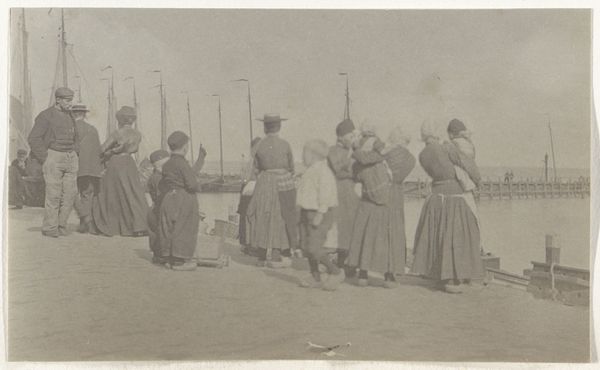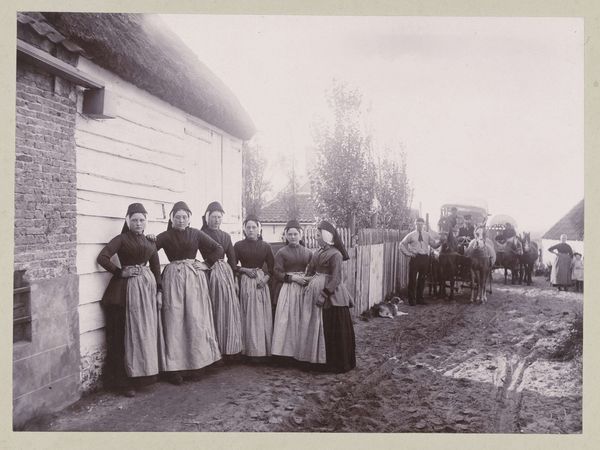
Mensen in klederdracht in Volendam, op de voorgrond enkele kinderen c. 1900 - 1910
0:00
0:00
print, photography, gelatin-silver-print
#
portrait
#
print photography
# print
#
archive photography
#
street-photography
#
photography
#
historical photography
#
gelatin-silver-print
#
19th century
#
genre-painting
#
realism
Dimensions: height 73 mm, width 101 mm
Copyright: Rijks Museum: Open Domain
Curator: So, here we have a gelatin silver print from around 1900-1910, titled "People in traditional clothing in Volendam, in the foreground some children," by G. Hidderley. Editor: It’s such a striking image, everyone in traditional dress, a real snapshot of a time and place. How do you approach a piece like this? Curator: Well, for me, it starts with the materials. This gelatin silver print – consider the means of production. Photography at the turn of the century was becoming increasingly accessible, yet still a deliberate process. This wasn't mass media; it was a crafted image. The photographer chose to document this particular scene, these individuals, their attire. What kind of social relations are we seeing here? The clothes themselves represent specific labour. Who made those clothes, where were the materials sourced? Editor: So, you see it as more than just a picture of people in costumes. It is about the labor. Curator: Exactly. And the consumption involved. Those clothes weren't cheap; the process of photography wasn't either. Who was this photo made for? The local population? Tourists seeking an 'authentic' experience? This image, by preserving the work, and the process becomes an artifact of cultural and economic exchange. What do you make of the surface? Is it distressed at all? What might the wear and tear suggest about its consumption? Editor: That makes me see it differently. I was just thinking about how it looks. Curator: Seeing the labor within production and in turn the economic conditions allows us to look past purely aesthetic elements. Editor: I guess I was focused on the "realism" aspect, capturing a moment in time. Curator: But 'realism' itself is a constructed ideal. Hidderley actively *chose* to frame the narrative, and these elements all reflect on that conscious process. Editor: That’s true. Focusing on the production helps to show these types of decisions. Curator: Absolutely. By examining the materials, production, and intended audience, we gain a much richer understanding. We reveal what an aesthetic lens might miss. Editor: Definitely. Thanks! This really sheds a new light on the image.
Comments
No comments
Be the first to comment and join the conversation on the ultimate creative platform.
